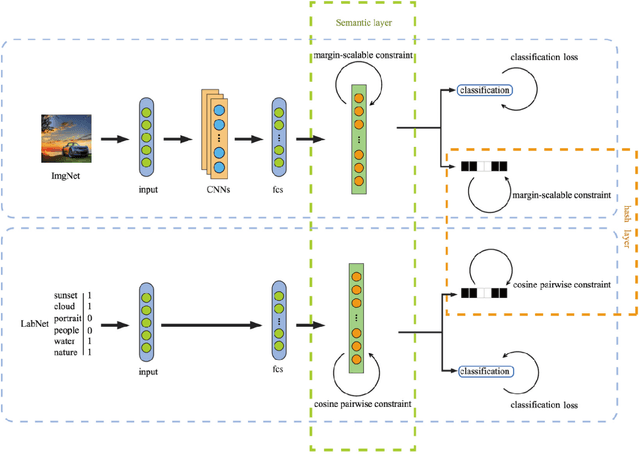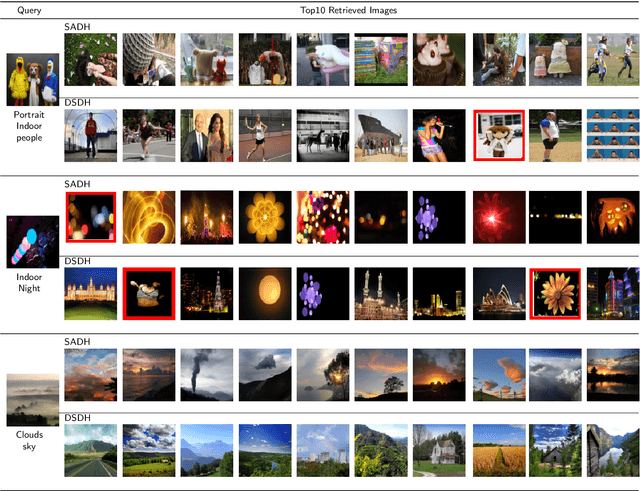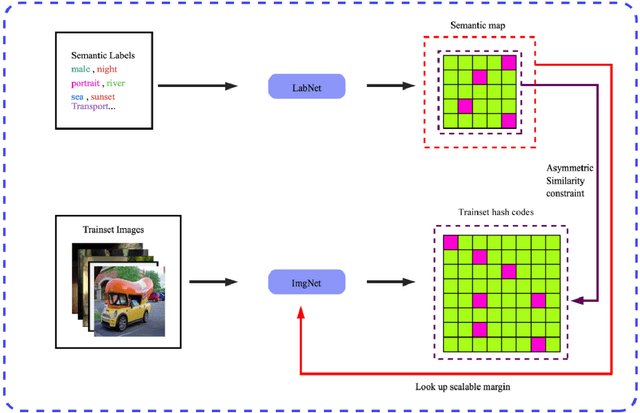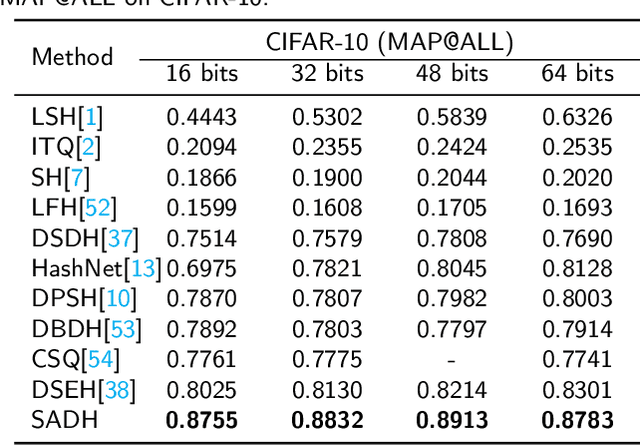Zhihao Dou
Plan Then Action:High-Level Planning Guidance Reinforcement Learning for LLM Reasoning
Oct 02, 2025Abstract:Large language models (LLMs) have demonstrated remarkable reasoning abilities in complex tasks, often relying on Chain-of-Thought (CoT) reasoning. However, due to their autoregressive token-level generation, the reasoning process is largely constrained to local decision-making and lacks global planning. This limitation frequently results in redundant, incoherent, or inaccurate reasoning, which significantly degrades overall performance. Existing approaches, such as tree-based algorithms and reinforcement learning (RL), attempt to address this issue but suffer from high computational costs and often fail to produce optimal reasoning trajectories. To tackle this challenge, we propose Plan-Then-Action Enhanced Reasoning with Group Relative Policy Optimization PTA-GRPO, a two-stage framework designed to improve both high-level planning and fine-grained CoT reasoning. In the first stage, we leverage advanced LLMs to distill CoT into compact high-level guidance, which is then used for supervised fine-tuning (SFT). In the second stage, we introduce a guidance-aware RL method that jointly optimizes the final output and the quality of high-level guidance, thereby enhancing reasoning effectiveness. We conduct extensive experiments on multiple mathematical reasoning benchmarks, including MATH, AIME2024, AIME2025, and AMC, across diverse base models such as Qwen2.5-7B-Instruct, Qwen3-8B, Qwen3-14B, and LLaMA3.2-3B. Experimental results demonstrate that PTA-GRPO consistently achieves stable and significant improvements across different models and tasks, validating its effectiveness and generalization.
CMPhysBench: A Benchmark for Evaluating Large Language Models in Condensed Matter Physics
Aug 25, 2025Abstract:We introduce CMPhysBench, designed to assess the proficiency of Large Language Models (LLMs) in Condensed Matter Physics, as a novel Benchmark. CMPhysBench is composed of more than 520 graduate-level meticulously curated questions covering both representative subfields and foundational theoretical frameworks of condensed matter physics, such as magnetism, superconductivity, strongly correlated systems, etc. To ensure a deep understanding of the problem-solving process,we focus exclusively on calculation problems, requiring LLMs to independently generate comprehensive solutions. Meanwhile, leveraging tree-based representations of expressions, we introduce the Scalable Expression Edit Distance (SEED) score, which provides fine-grained (non-binary) partial credit and yields a more accurate assessment of similarity between prediction and ground-truth. Our results show that even the best models, Grok-4, reach only 36 average SEED score and 28% accuracy on CMPhysBench, underscoring a significant capability gap, especially for this practical and frontier domain relative to traditional physics. The code anddataset are publicly available at https://github.com/CMPhysBench/CMPhysBench.
Toward Malicious Clients Detection in Federated Learning
May 14, 2025Abstract:Federated learning (FL) enables multiple clients to collaboratively train a global machine learning model without sharing their raw data. However, the decentralized nature of FL introduces vulnerabilities, particularly to poisoning attacks, where malicious clients manipulate their local models to disrupt the training process. While Byzantine-robust aggregation rules have been developed to mitigate such attacks, they remain inadequate against more advanced threats. In response, recent advancements have focused on FL detection techniques to identify potentially malicious participants. Unfortunately, these methods often misclassify numerous benign clients as threats or rely on unrealistic assumptions about the server's capabilities. In this paper, we propose a novel algorithm, SafeFL, specifically designed to accurately identify malicious clients in FL. The SafeFL approach involves the server collecting a series of global models to generate a synthetic dataset, which is then used to distinguish between malicious and benign models based on their behavior. Extensive testing demonstrates that SafeFL outperforms existing methods, offering superior efficiency and accuracy in detecting malicious clients.
Discrete Wavelet Transform-Based Capsule Network for Hyperspectral Image Classification
Jan 08, 2025



Abstract:Hyperspectral image (HSI) classification is a crucial technique for remote sensing to build large-scale earth monitoring systems. HSI contains much more information than traditional visual images for identifying the categories of land covers. One recent feasible solution for HSI is to leverage CapsNets for capturing spectral-spatial information. However, these methods require high computational requirements due to the full connection architecture between stacked capsule layers. To solve this problem, a DWT-CapsNet is proposed to identify partial but important connections in CapsNet for a effective and efficient HSI classification. Specifically, we integrate a tailored attention mechanism into a Discrete Wavelet Transform (DWT)-based downsampling layer, alleviating the information loss problem of conventional downsampling operation in feature extractors. Moreover, we propose a novel multi-scale routing algorithm that prunes a large proportion of connections in CapsNet. A capsule pyramid fusion mechanism is designed to aggregate the spectral-spatial relationships in multiple levels of granularity, and then a self-attention mechanism is further conducted in a partially and locally connected architecture to emphasize the meaningful relationships. As shown in the experimental results, our method achieves state-of-the-art accuracy while keeping lower computational demand regarding running time, flops, and the number of parameters, rendering it an appealing choice for practical implementation in HSI classification.
Adversarial Attacks to Multi-Modal Models
Sep 10, 2024



Abstract:Multi-modal models have gained significant attention due to their powerful capabilities. These models effectively align embeddings across diverse data modalities, showcasing superior performance in downstream tasks compared to their unimodal counterparts. Recent study showed that the attacker can manipulate an image or audio file by altering it in such a way that its embedding matches that of an attacker-chosen targeted input, thereby deceiving downstream models. However, this method often underperforms due to inherent disparities in data from different modalities. In this paper, we introduce CrossFire, an innovative approach to attack multi-modal models. CrossFire begins by transforming the targeted input chosen by the attacker into a format that matches the modality of the original image or audio file. We then formulate our attack as an optimization problem, aiming to minimize the angular deviation between the embeddings of the transformed input and the modified image or audio file. Solving this problem determines the perturbations to be added to the original media. Our extensive experiments on six real-world benchmark datasets reveal that CrossFire can significantly manipulate downstream tasks, surpassing existing attacks. Additionally, we evaluate six defensive strategies against CrossFire, finding that current defenses are insufficient to counteract our CrossFire.
EEG-Defender: Defending against Jailbreak through Early Exit Generation of Large Language Models
Aug 21, 2024Abstract:Large Language Models (LLMs) are increasingly attracting attention in various applications. Nonetheless, there is a growing concern as some users attempt to exploit these models for malicious purposes, including the synthesis of controlled substances and the propagation of disinformation. In an effort to mitigate such risks, the concept of "Alignment" technology has been developed. However, recent studies indicate that this alignment can be undermined using sophisticated prompt engineering or adversarial suffixes, a technique known as "Jailbreak." Our research takes cues from the human-like generate process of LLMs. We identify that while jailbreaking prompts may yield output logits similar to benign prompts, their initial embeddings within the model's latent space tend to be more analogous to those of malicious prompts. Leveraging this finding, we propose utilizing the early transformer outputs of LLMs as a means to detect malicious inputs, and terminate the generation immediately. Built upon this idea, we introduce a simple yet significant defense approach called EEG-Defender for LLMs. We conduct comprehensive experiments on ten jailbreak methods across three models. Our results demonstrate that EEG-Defender is capable of reducing the Attack Success Rate (ASR) by a significant margin, roughly 85\% in comparison with 50\% for the present SOTAs, with minimal impact on the utility and effectiveness of LLMs.
Self-supervised asymmetric deep hashing with margin-scalable constraint for image retrieval
Dec 07, 2020



Abstract:Due to its validity and rapidity, image retrieval based on deep hashing approaches is widely concerned especially in large-scale visual search. However, many existing deep hashing methods inadequately utilize label information as guidance of feature learning network without more advanced exploration in semantic space, besides the similarity correlations in hamming space are not fully discovered and embedded into hash codes, by which the retrieval quality is diminished with inefficient preservation of pairwise correlations and multi-label semantics. To cope with these problems, we propose a novel self-supervised asymmetric deep hashing with margin-scalable constraint(SADH) approach for image retrieval. SADH implements a self-supervised network to preserve supreme semantic information in a semantic feature map and a semantic code map for each semantics of the given dataset, which efficiently-and-precisely guides a feature learning network to preserve multi-label semantic information with asymmetric learning strategy. Moreover, for the feature learning part, by further exploiting semantic maps, a new margin-scalable constraint is employed for both highly-accurate construction of pairwise correlation in the hamming space and more discriminative hash code representation. Extensive empirical research on three benchmark datasets validate that the proposed method outperforms several state-of-the-art approaches.
 Add to Chrome
Add to Chrome Add to Firefox
Add to Firefox Add to Edge
Add to Edge